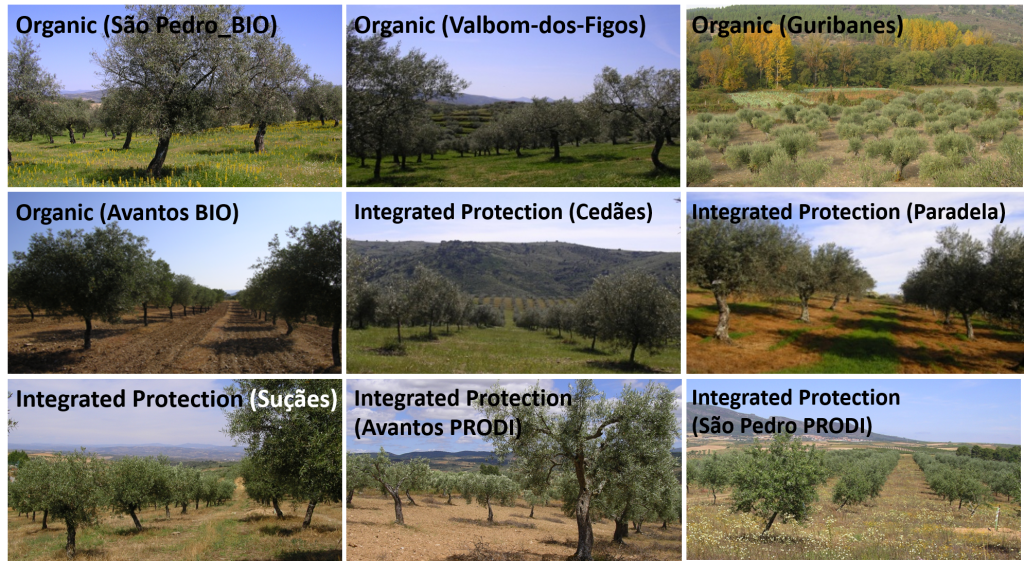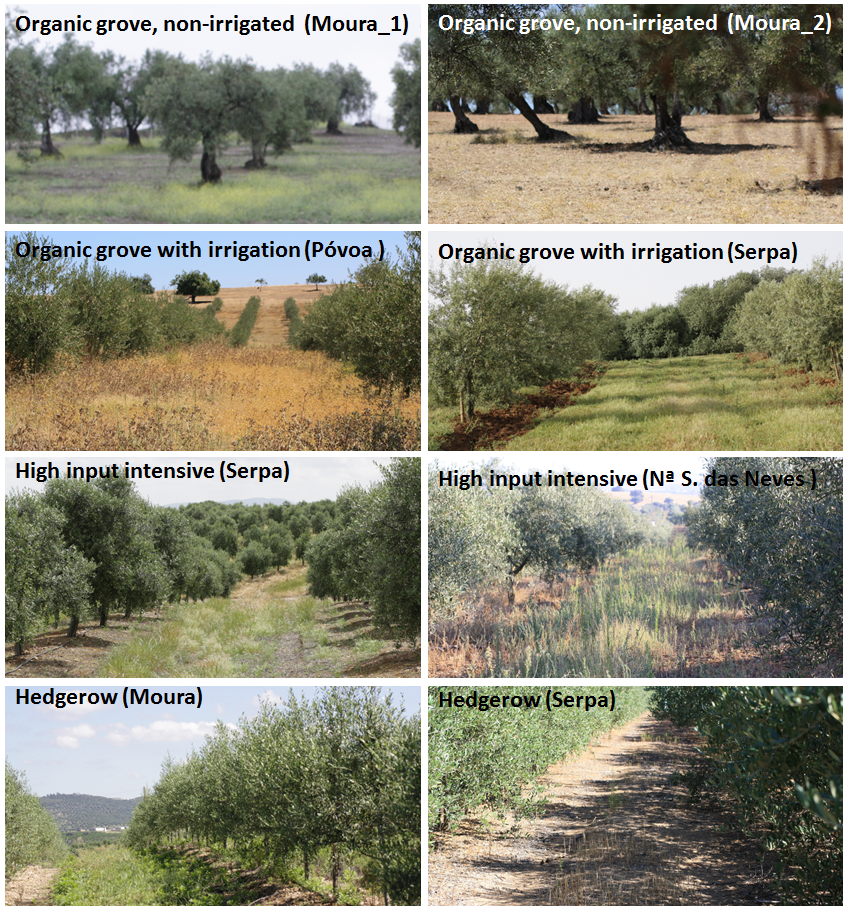Objective of this task:
Selection and characterization of various olive groves in the two main olive growing regions,Trás-os-Montes and Alentejo.
The seletion of the olive groves was based in a gradient of land use intensity that corresponds to the management regimes most frequently followed by the olive growers:organic farming and integrated production. Nine olive groves were selected in Trás-os-Montes region and eight in Alentejo region.
Olive groves selected in Tras-os-Montes region
.
Olive groves selected in Alentejo region
The characterization of each olive grove involved several variables such as, the grove area,altitude,age,density (trees per ha),olive tree variety or average height of the trees (<2.5 m or ≥ 2.5 m).
Additionally,the surrounding landscape buffer of 0.5-1.0 km diameter was established at each olive grove and characterized regarding landscape diversity and structure using aerial photographs of the sites and validation in the field. The characterization of each buffer is based on land use types (coniferous,broadleaved,mixed forest with closed,open,and very open stands,agro-forestry,artificial surfaces like villages or roads,open spaces with no vegetation,agricultural crops – which include other olive groves,agricultural and natural grasslands,shrub land and heath land,wetland,and water bodies). Landscape structure is quantified using metric parameters (number,area,shape and spatial configuration metrics) and derived at patch and class levels. Special attention is given to a detailed spatial analysis of ecological structures (e.g.,hedgerows,stone-walls),since they are key landscape features hosting populations of important predatory arthropod groups.



Leave a Reply